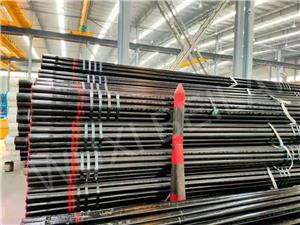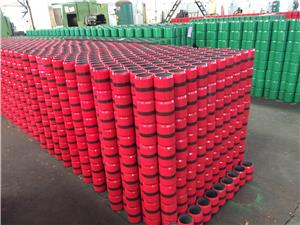What is the difference between solid piston rod and hollow piston rod?
As a key component connecting the piston and the driving mechanism, the piston rod plays a vital role in reciprocating machinery. According to its internal structure design, piston rods are mainly divided into two types: solid piston rods and hollow piston rods. There are significant differences between the two in structure, weight, performance and application scenarios.
1. Design structure
Solid piston rod: It has a solid interior, usually made of high-strength steel. This design allows the solid piston rod to have high bending and torsional strength and can withstand larger loads and working pressures.
Hollow piston rod: The interior is hollow in design, and the material is mostly seamless steel pipe. Made through forging, precision machining and heat treatment, its internal cavity not only reduces weight but also improves thermal conductivity.
2. Weight
Solid piston rod: Due to the solid interior, the overall weight is relatively heavy. This limits its application to a certain extent in mechanical systems that require overall weight control.
Hollow piston rod: The internal hollow design significantly reduces the weight, giving the hollow piston rod obvious advantages in situations where lightweight design is required.
3. Strength and stiffness
Solid piston rod: It has high bending and torsional strength and is ideal for withstanding large loads and working pressures. Its rigidity and stability enable it to maintain stable operation under various harsh working conditions.
Hollow piston rod: Although hollow inside, it also has good rigidity and bending resistance after precision processing and heat treatment. Its wall thickness is relatively large, further enhancing its rigidity. At the same time, the hollow design also makes it more adaptable under certain specific working conditions.
4. Thermal conductivity
Solid piston rod: The thermal conductivity is relatively average, and it mainly relies on the thermal conductivity of the material itself to dissipate heat. Under high temperature conditions, additional cooling measures may be required to maintain stable operation.
Hollow piston rod: The presence of an internal cavity improves its thermal conductivity. Heat can be quickly conducted to the outside through the cavity, thereby improving the heat dissipation effect. This gives the hollow piston rod better stability and durability under high temperature conditions.
5. Friction and resistance
Solid piston rod: During the transmission process, it may be subject to certain friction and resistance. These factors will affect its transmission efficiency and operational stability.
Hollow piston rod: Transmission force is transmitted through the hollow cavity, reducing the contact area with the surrounding environment, thereby reducing friction and resistance. This helps improve transmission efficiency and reduce energy losses.




